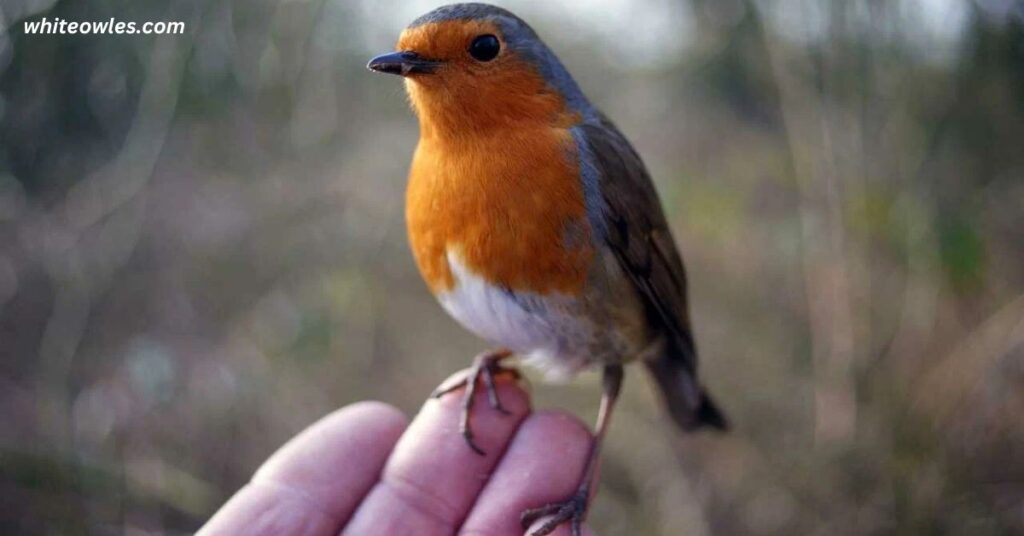Introduction to Robins and Cardinals
When it comes to birdwatching, few birds capture our attention like Robins and Cardinals. These two songbirds are not only beautiful but also fascinating in their behaviors and adaptations. Whether you’re a seasoned birdwatcher or just someone who enjoys nature, understanding the differences between these birds can make your outdoor experiences even more rewarding.
Robins, often associated with the arrival of spring, are known for their grayish-brown plumage and bright orange underparts. They are a common sight in open grasslands, meadows, and even suburban gardens. On the other hand, Cardinals, with their bright red coloration (in males) and distinctive black face masks, are a favorite among bird enthusiasts. They prefer dense shrubs and woodlands, making them a bit harder to spot but equally captivating.
Both birds play important roles in their ecosystems, from controlling insect populations to dispersing seeds. Whether you’re curious about their habitat preferences, breeding behaviors, or flight patterns, this guide will cover everything you need to know about these iconic songbirds.
Physical Characteristics: Size, Shape, and Color Patterns
One of the first things you’ll notice about Robins and Cardinals is how different they look. Let’s break down their physical characteristics to understand what makes each of them unique.
Size and Shape
- Robins: These birds are relatively large compared to other North American songbirds. They measure about 8 to 11 inches in length, with a wingspan of 12 to 16 inches. They have a rounded silhouette, balanced by their long legs and long tails. Weighing around 3 ounces, they are sturdy and well-adapted for foraging on the ground.
- Cardinals: In contrast, Cardinals are smaller and more compact. They typically measure 8 to 9 inches in length and weigh just 1.5 to 1.7 ounces—about half the weight of a Robin. Their hunched posture and thick, conical bill make them easily recognizable.
Color Patterns
- Robins: The American Robin has a grayish-brown back with bright orange underparts, making it a striking bird to observe. During flight, you’ll notice a white patch on their lower belly and tail. Female Robins have paler heads and less contrast in their coloring compared to males.
- Cardinals: Male Cardinals are famous for their vibrant red plumage, reddish bills, and black face masks. Females, while less flashy, are equally beautiful with their pale brown feathers and warm reddish tinges on their wings, crest, and tail. Both sexes share the same red-orange bill and black face mask, making them easy to identify.
Tail Differences
- Robins: Their tails are fan-shaped, which adds to their distinctive appearance, especially during flight.
- Cardinals: Cardinals have rounded tails with a brownish-red coloration, setting them apart from the black tails of Robins.
Habitat Preferences: Where Do They Live?

When it comes to habitat preferences, Robins and Cardinals have distinct choices that reflect their lifestyles and behaviors. Understanding where these birds live can help you spot them more easily during your birdwatching adventures.
Robins
Robins are highly adaptable birds that thrive in a variety of environments. They are commonly found in open areas such as grasslands, meadows, and gardens. They prefer spaces with short, well-manicured grass, which makes it easier for them to hunt for their favorite food: worms and insects.
During the breeding season, Robins build their nests in a variety of locations, including trees, bushes, eaves, and even lamp posts. Their adaptability to human-modified landscapes makes them a common sight in suburban and urban areas. As migratory birds, Robins move to warmer regions during the winter, returning to their breeding grounds in the spring.
Cardinals
In contrast, Cardinals prefer habitats with dense shrubs and woodlands. They are often found in areas where vegetation is thick and well-maintained, such as forest edges, overgrown fields, and backyards with plenty of bushes. Unlike Robins, Cardinals are non-migratory birds, meaning they stay in the same area year-round.
Cardinals are also frequent visitors to bird feeders and birdhouses, especially in suburban and rural areas. Their preference for dense cover provides them with protection from predators and a steady supply of food, such as seeds and berries.
You’ll Love: The Hidden Spiritual Meanings Behind Crow Cawing at You
Diet and Feeding Habits: What Do They Eat?

The diet and feeding habits of Robins and Cardinals reveal a lot about their roles in the ecosystem and how they adapt to changing seasons. Let’s explore what these birds eat and how they find their food.
Robins
Robins have a varied diet that changes with the seasons. During the spring and summer, they primarily feed on worms and insects, making them excellent for natural pest control in gardens. You’ll often see them hopping across lawns, tilting their heads to listen for movement underground.
As the weather cools in fall and winter, Robins shift their diet to include more fruits and berries. This seasonal change helps them meet their nutritional needs when insects are scarce. They are particularly fond of holly berries, juniper berries, and other small fruits.
Cardinals
Cardinals, on the other hand, are primarily granivorous, meaning their diet consists mostly of seeds and grains. They have strong, thick bills that are perfect for cracking open sunflower seeds, safflower seeds, and other hard-shelled foods. This makes them frequent visitors to backyard bird feeders, especially during the winter when natural food sources are limited.
Young Cardinals, however, rely heavily on insects for rapid growth and development. During the breeding season, adult Cardinals will also consume more insects to provide protein for their chicks. In the wild, they forage for berries, nuts, and small fruits, often hopping on the ground or around bushes to find food.
Breeding and Nesting Behaviors: How Do They Raise Their Young?
The breeding and nesting behaviors of Robins and Cardinals are fascinating and highlight their unique approaches to raising their young. Let’s take a closer look at how these birds ensure the survival of their chicks.
Cardinals
Cardinals are known for their monogamous breeding habits. Once a pair forms, they often stay together for several years, and sometimes for life. This strong pair bond is evident during the breeding season when the male and female work together to build their nest and care for their young.
The male Cardinal plays an active role in attracting a mate, often singing melodious tunes to communicate with the female. Together, they build a cup-shaped nest using twigs, grass, and leaves, usually placing it in dense shrubs or low trees. The female lays 3 to 4 eggs, which she incubates for about 11 to 13 days. Both parents take turns feeding the chicks, which fledge (leave the nest) after 9 to 11 days.
Robins
In contrast, Robins do not typically form long-term pair bonds. The female Robin is primarily responsible for building the nest, which is a skillfully crafted cup-shaped structure made of twigs, grass, and mud. These nests can be found in a variety of locations, including trees, shrubs, and even on man-made structures like eaves and lamp posts.
The female lays 3 to 5 eggs, which are a distinctive blue color due to a pigment called biliverdin. She incubates the eggs for about 12 to 14 days, while the male defends the territory and occasionally brings food. Once the chicks hatch, both parents feed them a diet of worms and insects until they are ready to leave the nest after about 13 to 16 days.
Territorial and Social Behaviors: Are They Friendly or Aggressive?
When it comes to territorial and social behaviors, Robins and Cardinals have distinct personalities. Let’s explore how these birds interact with each other and their environment.
Robins
Robins are known for their territorial nature, especially during the breeding season. Male Robins establish and defend their nesting areas with short, loud calls to warn off intruders. They can be quite aggressive when protecting their territory, often chasing away other birds or even small animals.
However, outside of the breeding season, Robins exhibit more social behavior. In the winter, they often form large flocks, sometimes consisting of hundreds of birds. These flocks gather to roost together at night, providing safety in numbers during the colder months. This shift from territorial to social behavior is one of the most interesting aspects of their lifestyle.
Cardinals
Cardinals, on the other hand, are more solitary and territorial throughout the year. Male Cardinals are particularly fierce in defending their territory, using sharp, consistent alarm calls to warn other males to stay away. This behavior is especially prominent during the breeding season when they are protecting their nests and mates.
Unlike Robins, Cardinals do not typically form large flocks. Instead, they prefer to live in pairs or small family groups. During the winter, you might see a male and female Cardinal foraging together, but they generally maintain a more solitary or paired lifestyle. Their territorial behavior ensures they have access to food and nesting sites, which are crucial for their survival.
Flight Patterns: How Do They Move?
The flight patterns of Robins and Cardinals are as unique as their personalities. Understanding how these birds move can help you identify them more easily and appreciate their adaptations to their environments.
Robins
Robins are known for their straight-line flight patterns, which give the impression that they are on a mission. They generally fly at moderate speeds, avoiding sudden changes in direction unless they are fleeing from predators. This steady, purposeful flight is especially noticeable when they are foraging for food or returning to their nests.
One interesting aspect of their flight is how they flap their wings. Instead of the typical up-and-down motion, Robins prefer to slightly twist their wings during flight. This unique style helps them maneuver efficiently, whether they’re darting across a lawn or navigating through trees.
Cardinals
In contrast, Cardinals have more erratic flight patterns. Their movement often includes sudden dips and sharp turns, making their flight less predictable than that of Robins. This style of flying is particularly useful for navigating through dense shrubs and woodlands, where they spend much of their time.
Cardinals are also known to forage for food close to the ground, and their flight pattern helps them move quickly between bushes and low branches. While they may not cover long distances in one go, their ability to make quick, agile movements makes them well-suited to their preferred habitats.
Conservation and Human Interaction: How Do They Adapt to Humans?
Both Robins and Cardinals have adapted remarkably well to human presence, making them common sights in backyards, parks, and suburban areas. Let’s explore their conservation status and how they interact with humans.
Conservation Concerns
- Robins:
American Robins are not currently facing significant conservation threats. They are highly adaptable and have a broad range across North America. However, like all wildlife, they can be affected by environmental changes, such as habitat loss and pesticide use, which can reduce their food supply. - Cardinals:
Similarly, Northern Cardinals are not listed as a species of conservation concern. They are widespread and thrive in a variety of habitats. However, habitat destruction and environmental pollution can still impact their populations, especially in urbanizing areas.
Human Interaction
- Robins:
Robins are often seen as friendly neighbors in human-modified landscapes. They are common visitors to gardens and parks, where they forage for worms and insects on lawns. Their early morning songs are a welcome sign of spring, and their adaptability to living near humans has made them a beloved part of many communities. - Cardinals:
Cardinals are also frequent visitors to backyards, especially where bird feeders are available. Their bright red coloration and melodious songs make them a favorite among birdwatchers. They are known to inhabit gardens and wooded areas in suburban neighborhoods, often bringing joy to those who spot them.
Both birds have learned to coexist with humans, taking advantage of the food and shelter provided by bird feeders, birdhouses, and well-maintained landscapes. This adaptability has helped them thrive even as their natural habitats face challenges.
FAQs About Robins and Cardinals
Are Robins male or female?
Both male and female Robins exist. Male Robins are known for their bright red breasts, while females have paler coloring with less contrast. This difference helps them blend into their surroundings, especially during nesting.
Are Robins peaceful birds?
Robins are generally peaceful but can become territorial during the breeding season. They may aggressively defend their nests and feeding areas from intruders, including other birds.
Why are Robins so special?
Robins are often seen as symbols of renewal and the arrival of spring. Their early appearance in gardens and their cheerful songs make them a favorite among birdwatchers and nature lovers.
Are Robins aggressive?
While Robins are usually peaceful, they can be aggressive when defending their territory or nests, especially during the breeding season. They may chase away other birds or even small animals.
Why are Robin eggs blue?
The blue color of Robin eggs is due to a pigment called biliverdin, which is deposited in the eggshell. This color may help camouflage the eggs or signal the female’s health to the male.
Do Cardinals migrate?
No, Cardinals are non-migratory birds. They stay in the same area year-round, relying on bird feeders and natural food sources like seeds and berries during the winter.
What do Cardinals eat?
Cardinals are primarily granivorous, meaning they eat seeds and grains. They also enjoy berries, insects, and small fruits. They are frequent visitors to backyard bird feeders, especially for sunflower seeds.
How can I attract Cardinals to my yard?
To attract Cardinals, provide dense shrubs for cover, bird feeders filled with sunflower seeds or safflower seeds, and a source of fresh water. They are also drawn to areas with plenty of berries and fruit-bearing plants.
Do Cardinals mate for life?
Cardinals are known for their monogamous breeding habits. Once they form a pair, they often stay together for several years, and sometimes for life. Both parents work together to raise their young.
What is the difference between male and female Cardinals?
Male Cardinals are bright red with a black face mask, while females are pale brown with reddish tinges on their wings, crest, and tail. Both sexes have the same red-orange bill and black face mask.
Got it! Below is the Conclusion section, written in a proper human tone and easy English, with all LSI and NLP keywords incorporated and bolded as requested. Let’s wrap this up with a heartfelt conclusion!
Conclusion: Why These Birds Are So Special
Robins and Cardinals are more than just pretty birds. They bring joy to nature lovers and birdwatchers everywhere. Each bird has its own unique charm and role in the ecosystem.
Robins are special because they adapt well to people.
They live in gardens, parks, and even cities. Their grayish-brown feathers and orange bellies make them easy to spot. They also eat worms and insects, helping keep gardens healthy. Their songs remind us that spring is here.
Cardinals stand out with their bright red color (in males) and sweet songs. They stay in the same place all year, making them great backyard neighbors. They love bird feeders and eat seeds, berries, and insects. Their loyalty to their mates is heartwarming.
Both birds are important to nature. They spread seeds and control pests. They also bring beauty to our lives. Whether it’s a Robin’s song or a Cardinal’s red feathers, these birds remind us to enjoy the simple wonders of nature.











